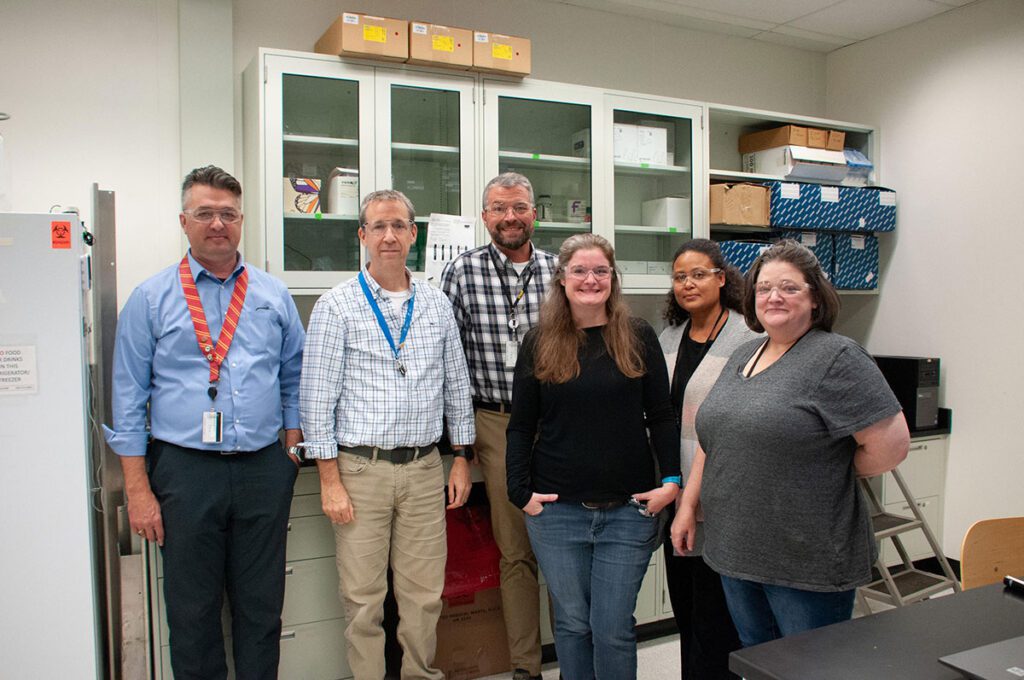In response to the current H5N1 avian influenza outbreak, the National Institute of Standards and Technology (NIST) has developed a research grade test material to support the development and validation of diagnostic tests for the H5N1 virus.
This genetic material includes three segments of RNA corresponding to certain proteins of the H5N1 virus. Each unit of the material includes three 100-microliter vials, each containing one of the RNA fragments, with approximately 1 million RNA molecules per microliter. Because this genetic material is synthetic and noninfectious, it offers manufacturers a safe way to test and calibrate their equipment and methods. Tests that produce positive results when using this genetic material will meet a key benchmark for diagnostic reliability.
The material was developed in collaboration with the U.S. Centers for Disease Control and Prevention (CDC).
“The sooner this genetic material reaches manufacturers, the faster we can facilitate the development and validation of new H5N1 diagnostics,” added NIST microbial geneticist Scott Jackson.

The synthetic RNA fragment kits are being provided by NIST on a collaborative basis for recipients to evaluate the material’s potential fitness-for-purpose as a reference material for RT-qPCR assay development and evaluation, calibration of RT-qPCR methods and benchmarking other H5N1 control materials.
The institute similarly released SARS-CoV-2 research materials in 2020 to support diagnostic assay development to assist COVID-19 pandemic response, and positive controls for mpox tests in 2022.
“We believe this genetic material will significantly advance our national readiness for potential pandemic threats,” said NIST research chemist Peter M. Vallone.

Should H5N1 spread widely among humans, millions of diagnostic tests will be needed. To boost capacity, the CDC wants private companies to develop tests for detecting infections caused by the strain of the H5N1 virus that could cause an outbreak in humans. In June 2024, NIST entered a $1.5 million interagency agreement with the CDC to develop a genetic material that will help commercial entities produce reliable diagnostic tests.
“NIST is known for producing high-quality reference materials to support pathogen detection,” said Todd Davis, acting chief of CDC’s Virology, Surveillance and Diagnosis Branch. “Our collaboration with NIST exemplifies how the U.S. government unites expertise to prepare for pandemics.”
The H5N1 (Avian Influenza) Synthetic RNA Fragments are available through the NIST Office of Reference Materials.
RELATED READING:
NIST Biosurveillance and Pathogen Detection program summary
National Institute of Science and Technology – Aug 2024
NIST’s efforts include development of documentary standards and reference materials to increase confidence in a biological assessment mission capability; developing research grade test materials in response to the COVID-19 pandemic, mpox outbreaks, and emerging threat of H5N1; and working with stakeholders to facilitate detection of biological targets in wastewater.
Rapid production and free distribution of a synthetic RNA material to support SARS-CoV-2 molecular diagnostic testing
Biologicals – May 2023
This material was shipped from NIST free of charge to laboratories across the globe to provide a non-hazardous material for assay development and assay calibration. The material consisted of two unique regions of the SARS-CoV-2 genome approximately 4 kb nucleotides in length. In this report, the preparation, stability, and limitations of this material are described.
RNA reference materials with defined viral RNA loads of SARS-CoV-2—A useful tool towards a better PCR assay harmonization
PLOS One – Jan 2022
As Ct values can vary widely between different runs on the same instrument, it is recommended that reference materials described here or similar control materials should be applied as defined run controls to anchor Ct values with copy-based units such as genome copies or international units to monitor the stability of the test system applied. Using reference materials for quantifying SARS-CoV-2 RNA in patient specimens should pave the way for a harmonization of results from various test systems for the detection of SARS-CoV-2 RNA.


